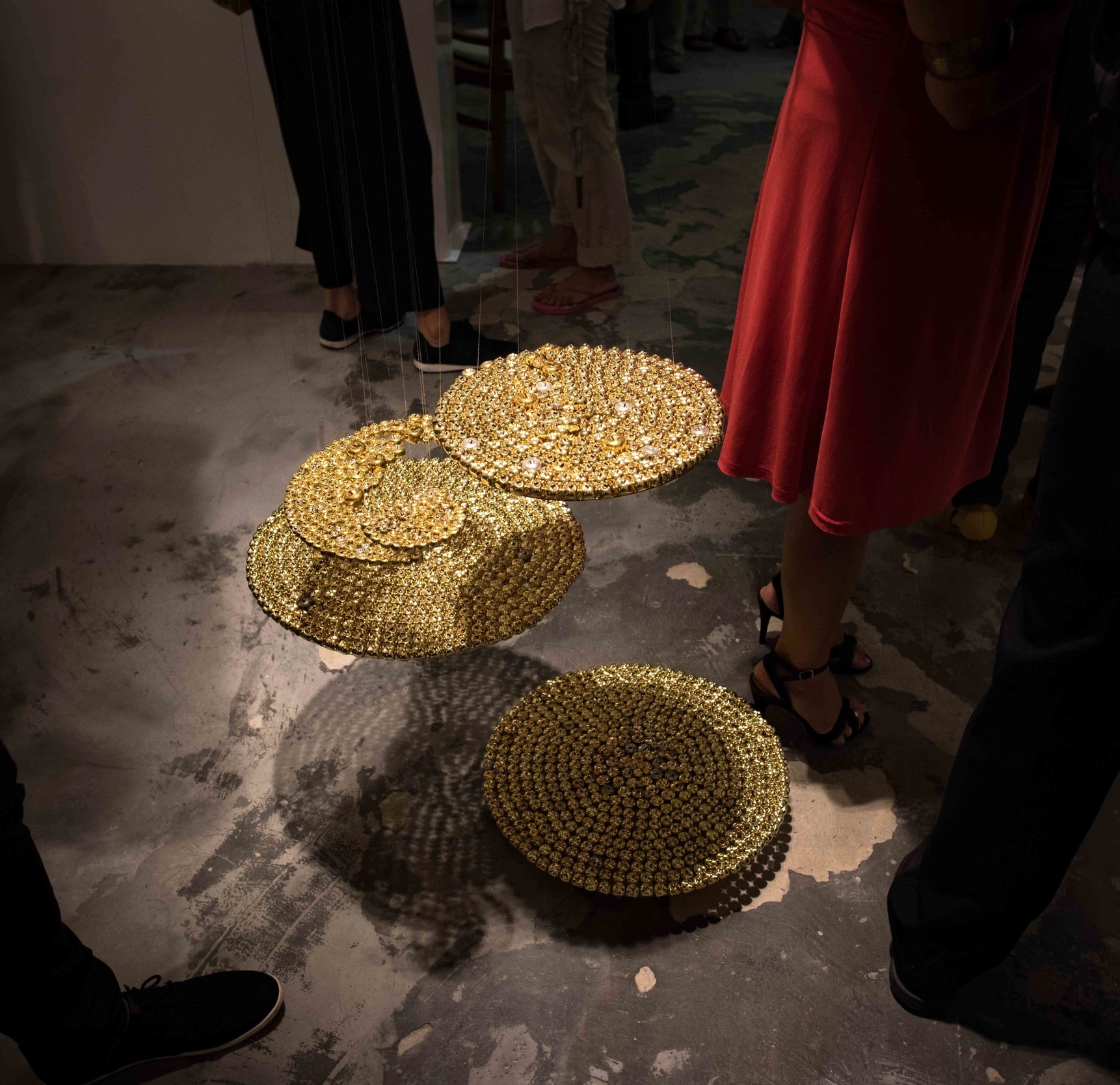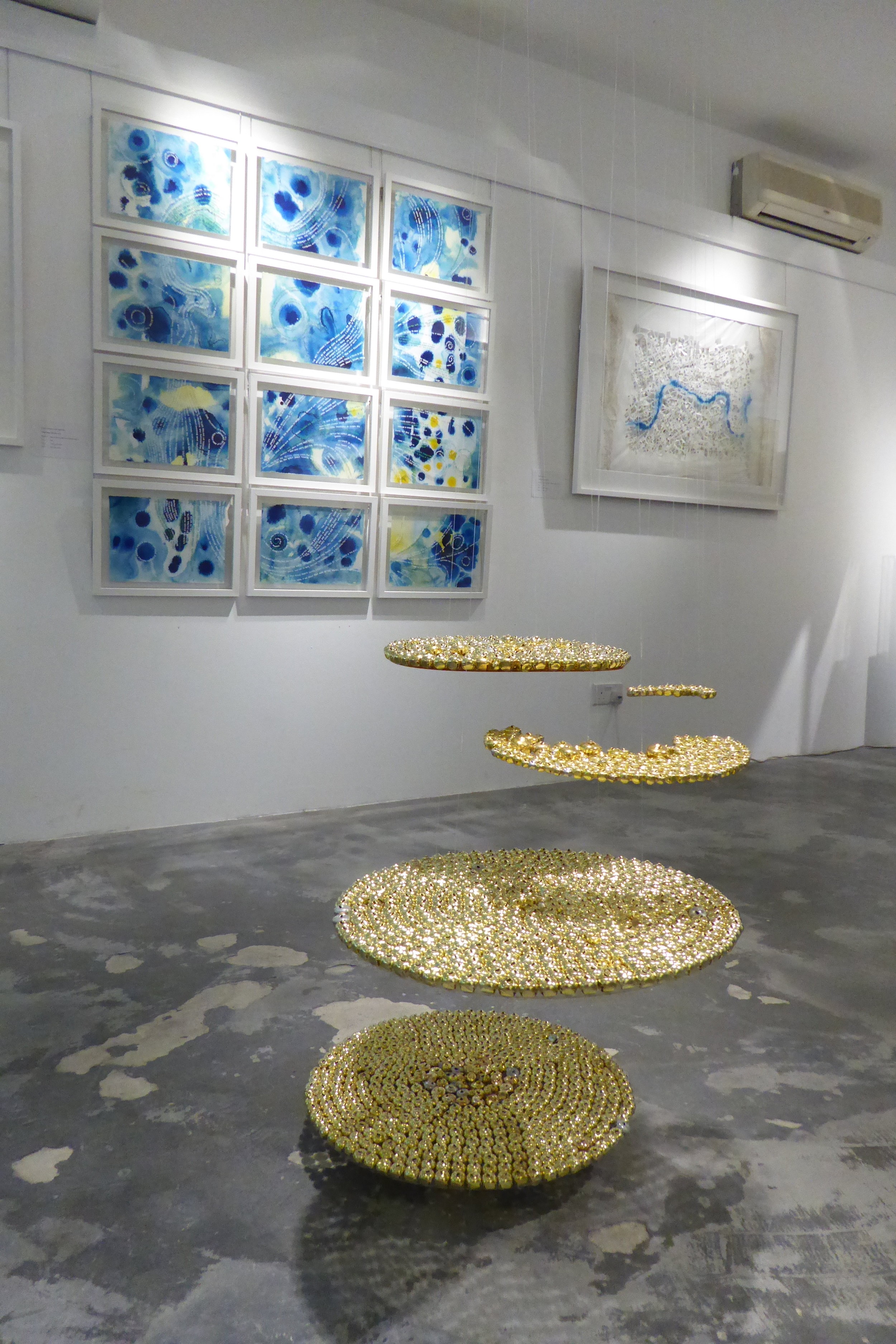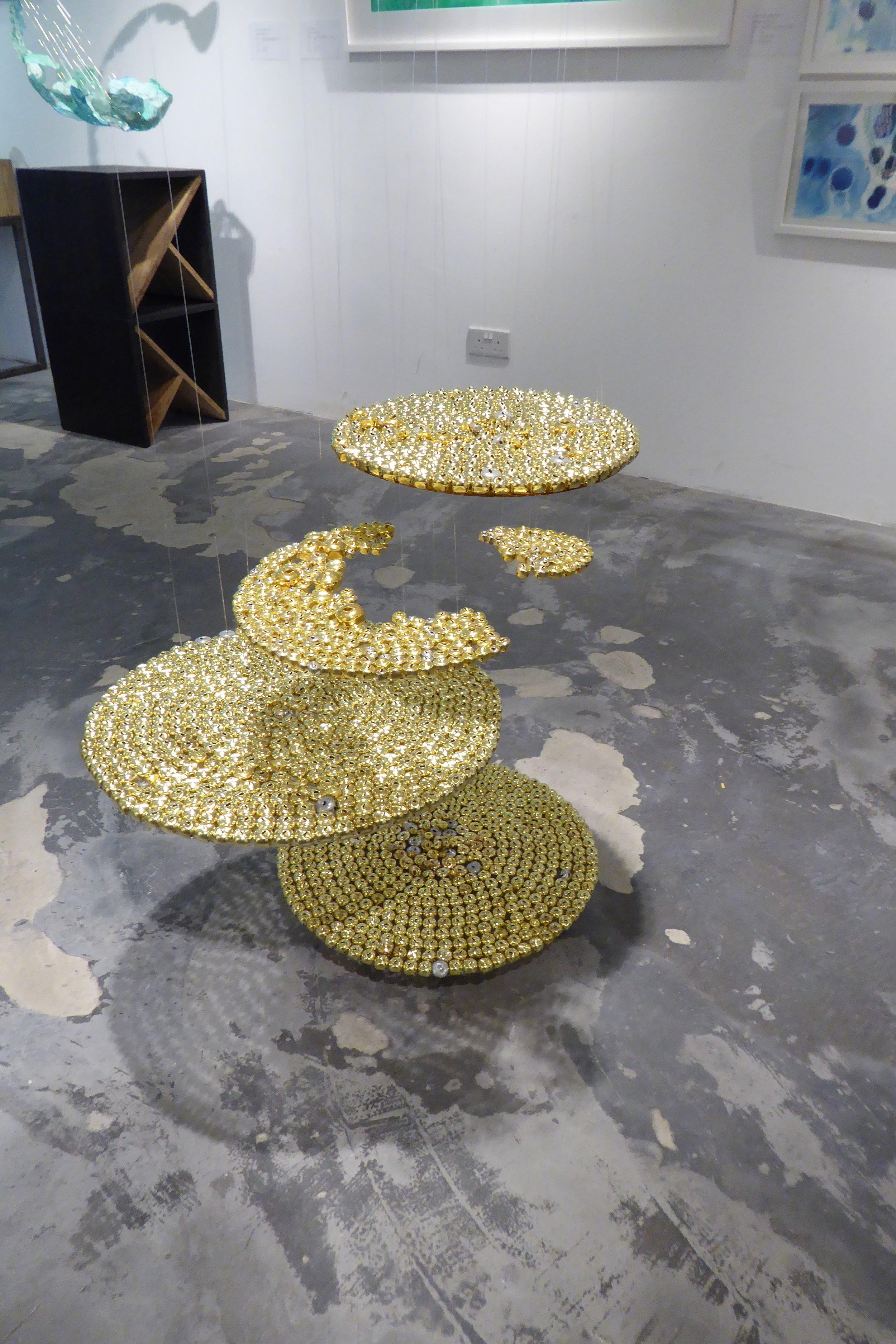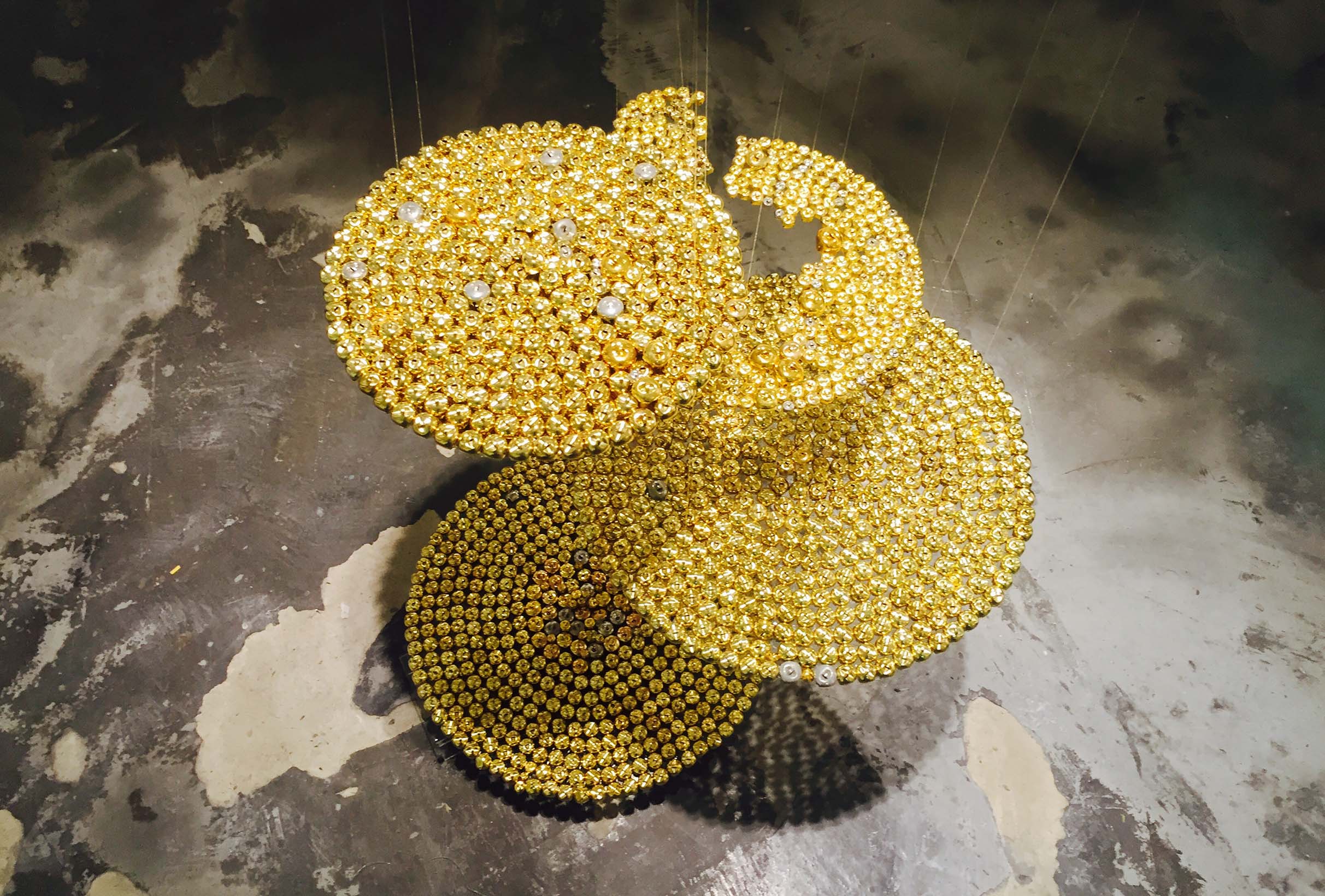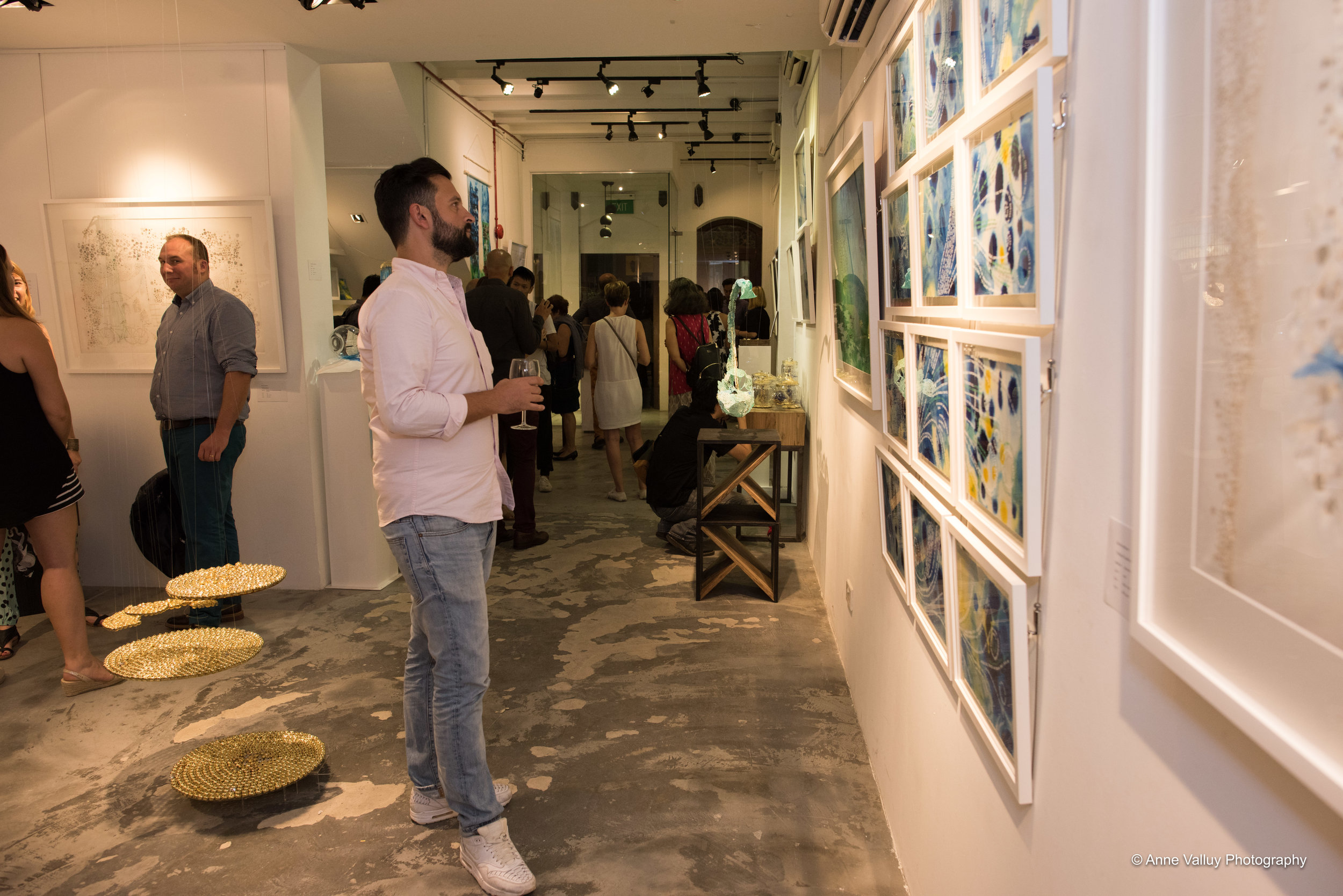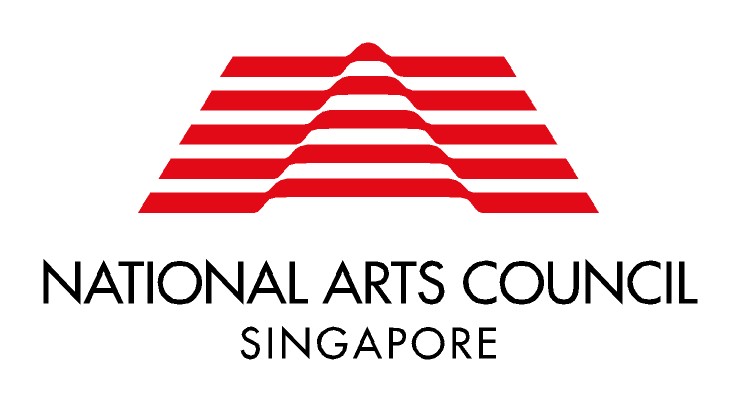After Oud
By Nicola Anthony and Marc Nair, 2017
SINGAPORE, YANGON, LONDON
These vessels are inspired by the alchemistic and olfactory world of Arabic perfumes, minyak attar (or essential oil in Malay language), which are used in the Hajj pilgrimage to Mecca.
Cut text, gold leaf, and clock mechanisms in glass vessels
Installation series, size variable.
In this kinetic sculpture, cut-text sentences of Marc Nair's poem After Oud are suspended within gold vessels, like they are floating scent. Words are cut like strands of lace made of blue pigment and gold leaf. Each poem is suspended on a clock mechanism.
After Oud is a kinetic sculpture which gives the appearance of an army of little creatures, beings, or moments, captured in jars. It brings the viewer into the olfactory world of earthy scents and delicate fragrances often associated with Arab street.
Oud also is a scent with an ancient history, coming from the wood of the Southeast Asian Agar tree only when it is infected with a particular type of mold. I wanted to capture Marc’s poem After Oud like it was a floating scent, delicate and perhaps decaying, within decadent gold and glassy vessels. The words are cut like strands of lace, made of blue pigment and gold leaf. Each is suspended, quivering, on a rotary mechanism within its capsule. By capturing these redolent specimens I hope to preserve the poignancy of Oud, and the “chemical poetry” of Marc’s words.
NICOLA ANTHONY
Minyak attar was significant in the trade heritage of Singapore, Malaysia, and many ports around the world which were stops on the Hajj journey. Current migrants often follow the trade routes looking for work, and describe this as a pilgrimage of sorts which they make for their family, a journey away from misfortune and towards hope.
The sculptures measure time: the text rotates once per second, never static. As with many of the other text sculptures, the words are partly hidden, the poem is not fully readable (much like the complex stories and poems of many places and people we meet).
An article by Shireen Marican delves deeper:
"Twelve glass jars sit atop a wooden display piece, all capped with the familiar gold embellishment that seems to be a recurring artwork visual in the exhibition. As you move closer to this wooden table display, you catch a faint but lasting whiff of earthy scents, or Oudh – a delicate fragrance familiar to Kampong Glam.
After Oud is a collection of glass jars in different shapes and sizes that chooses Singapore’s Bussorah Street in Kampong Glam as muse. Within these jars, strings of words in blue and gold taken from Marc Nair’s poem of the same name (“After Oud”) dangle together. Like Marc, Nicola is inspired by Bussorah Street and its famous aromatic scent store that has served the Kampong Glam community for years.
These aromatic scents are oils known as minyak attar, or essential oil in Malay language that is derived from the word attar, the Arabic transliteration of the word scent. Minyak attar is a historical product that was significant in the traditional trade heritage of the Kampong Glam cultural precinct. Almost 70 years later since this trade was first introduced in 1938, the minyak attar is still in demand by the community and tourists alike, and contributes to the intangible heritage of the precinct.
In fact, the royal blues and golds of this work are also reminiscent of the regal splendor that echoed in the streets of Kampong Glam during the times of Sultan Hussein Shah – pre-modern Singapore’s last monarch. Like the exhibition, this work becomes an intersection of the past and present cultural landscape of Kampong Glam that combines aspects of heritage that were practised then and is still practised now. The common ground between the past and present is actively explored, captured in visuals and scents and finally entrapped within these very glass jars."
Thank you to partners, sponsors and supporters:









